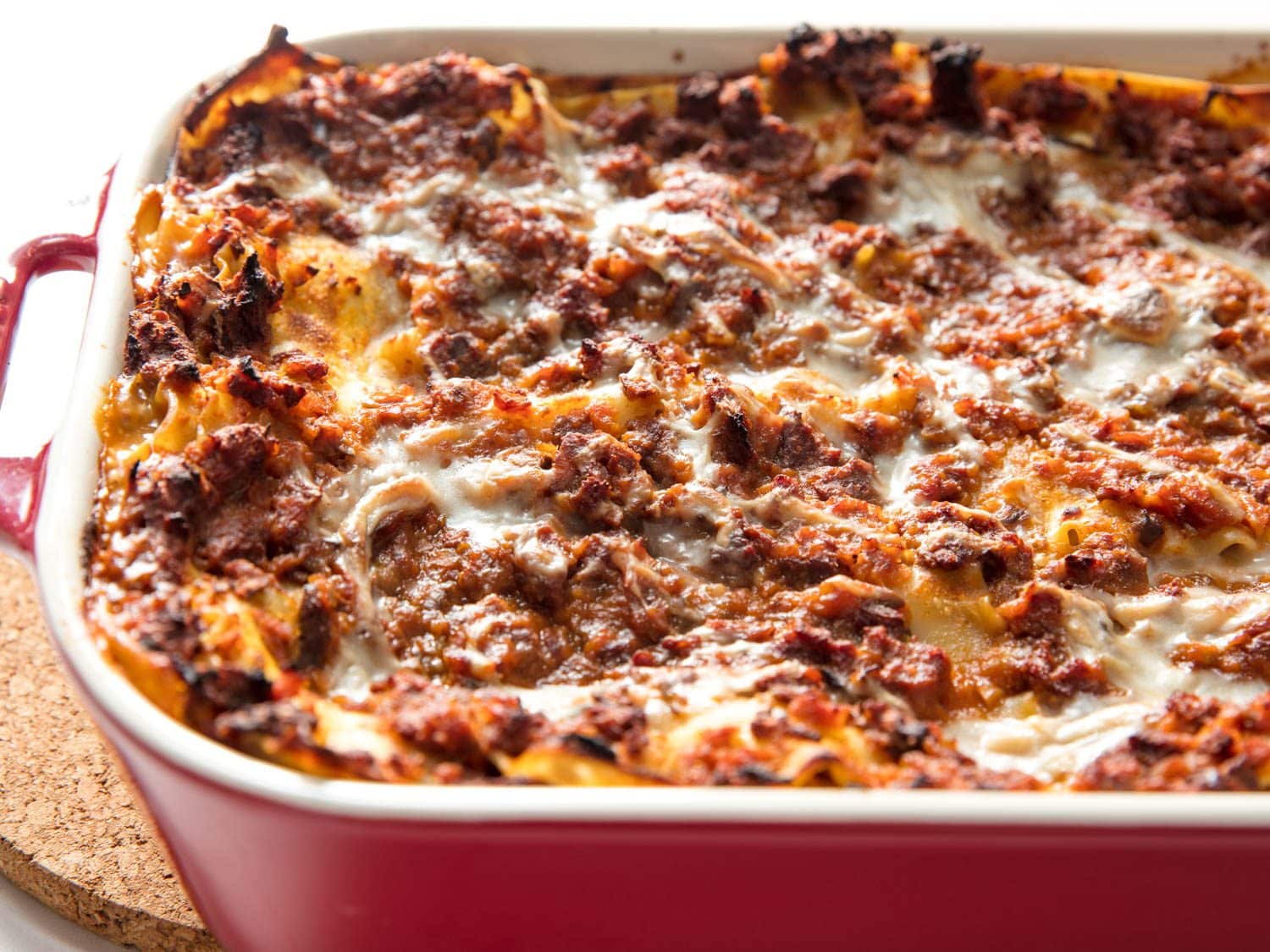
[Photographs: Vicky Wasik]
No vegan has ever asked me how I think they should eat, but if they did, I’d probably tell them to avoid faux meat and dairy dishes at all costs. Forget about eating hamburgers, hot dogs, fried chicken, Alfredo sauce, and shepherd’s pie, I’d say. You gave that stuff up as soon as you went vegan. But I’d be saying that from the luxurious position of a person who still eats those foods.
I have to admit, it wouldn’t be a fair response: It’s easy to implore vegans to embrace vegetables in all their natural beauty when Popeyes is still on my menu. Roasted carrots can be a glorious thing, but they won’t quench a vegan’s desire for a juicy beef patty. That’s probably why, when I sent a call out on Twitter for vegan recipe requests, multiple people asked for lasagna. It’s loaded with meat, or dairy, or both, making it a real challenge to veganize successfully.
The Challenge of Vegan Cooking
Before I get to the lasagna, here’s one other thing about vegan recipes: They often suck. This is largely because it’s damned hard to re-create a dish that’s traditionally centered on animal products. There’s incredible variety in the vegetable kingdom, but what it offers is totally unlike meat, eggs, and dairy. The flavors are different, the textures are different, the fats are different, and while some companies are getting better at faking it, there’s still a long way to go, especially for the home cook without a food science degree or access to fancy equipment that’s capable of pulling off some serious ingredient manipulations.
An added problem is that a lot of vegan recipe writers have come to do what they do because they’re vegans first and cooks second, which doesn’t always bode well for their recipes. I’m gonna get a lot of hate mail for writing that, but anyone who’s eaten at enough vegan restaurants and cooked enough online vegan recipes will know I’m not talking smack. These days, you’ll often find the most exciting and delicious vegan and vegetarian food at restaurants where meat is on the menu and skilled cooks of all persuasions are in the kitchen. If you’re a vegan chef who’s about to fire off a diatribe in the comments or in an email to me, just know that I’m aware there are exceptions, and I have no reason to doubt you’re one of them.
On top of all that, people who have been vegan for a long time have gotten too far from the animal-based foods they’re trying to re-create. They may lust after carbonara pasta, but they’d have as much trouble successfully re-creating it in vegan form as most of us would trying to draw an accurate portrait of a person we haven’t seen in years. We may be able to picture them in our minds, but trying to get the brow just right, to nail the shape of the eyes or the ears, quickly makes us realize just how many of the details have faded.
That’s where a non-vegan cook, like me, can be useful. I still eat all this stuff, I have fresh memories of what it’s supposed to taste like, and my standards haven’t collapsed to the point where a pasty puck of beans stuffed into a bun could somehow satisfy a burger craving.
Vegan Lasagna Bolognese, in Three Parts
There are many types of lasagna, but the two you’re most likely to encounter are a true Italian lasagna alla bolognese, featuring a beefy ragù and a béchamel sauce, and the Italian-American spin-off, which is packed with ricotta, mozzarella, and either a tomato sauce or a ragù. I’ll deal with the latter in a separate article and recipe. Today, it’s real-deal lasagna Bolognese…except not real-deal, because it’s vegan. But damned if it’s not close.
This is where I give the inevitable caveat: I am not an alchemist. Is my recipe an absolutely faithful replica of lasagna Bolognese, indistinguishable from the original in every way? Of course not. If you’re a meat-eater and you want the real experience, you need to make my non-vegan recipe. But if you’re a vegan who’s been craving that flavor and texture for years and has yet to really get it, I’m confident this will deliver. And if you’re a meat-eater who just wants a little less meat in your life without fundamentally changing the kinds of dishes you normally eat, I think you’ll be pleasantly surprised by the results.
There are three components to think about here. First, there’s the pasta, which is relatively easy. A classic lasagna is made with fresh, thin sheets of broad noodles, often enriched with egg. For a vegan version, eggy pasta is out. The solution is simple: Just buy a box of dry lasagna made with nothing more than wheat and water.
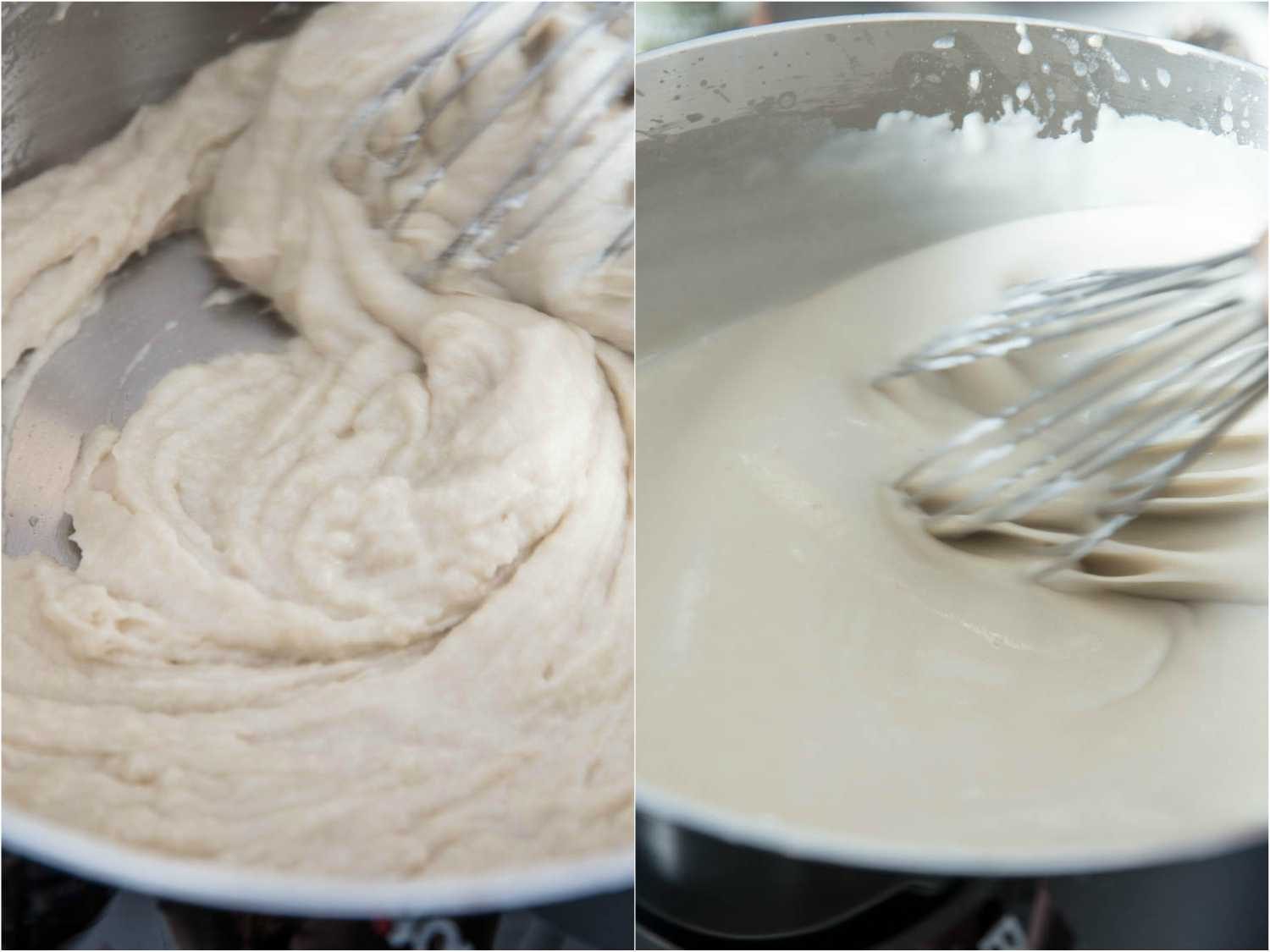
Next, we have the béchamel, which is typically made by cooking flour in butter, then whisking in milk to form a thick and creamy white sauce. In a vegan version, the butter is out, and so is the milk, which seriously cripples our options. I considered creating a creamy sauce using puréed cauliflower, but I decided that the starchy, floury flavor of a true béchamel was too important to omit completely. That meant that I needed to cook the flour in a fat, then thicken it with a liquid.
For my fat, I went for a neutral-flavored refined coconut oil, which is closer to butter in terms of its melting point than vegetable oils, though a vegetable oil would work fine, too. Make sure not to use unrefined coconut oil, which will still taste and smell like coconut, or you’re going to be chowing down on a weirdly tropical rendition of lasagna (then again, Hawaiian pizza is a thing, so who knows?).
To replace the milk, I grabbed a bottle of unflavored, unsweetened almond milk. It’s not great, and it’s certainly not like cow’s milk, but it’s about as close as you’re likely to get in the realm of plant-based milks. The key to pulling this off is the secret to a lot of vegan recipes that attempt to replicate meat and/or dairy: Lay down flavor smokescreens.
If you make a “béchamel” with coconut oil, flour, and almond milk, then taste it by itself, you will not be happy. You have to cover up its obvious shortcomings. I do that by infusing the almond milk first with aromatics, ones that often go into a classic béchamel, too: garlic, fresh thyme, a bay leaf, and some black peppercorns. I strain them all out after a simmering step, then make the béchamel. After that, it’s time to add yet more flavorful concealer, this time with a healthy grating of fresh nutmeg and some freshly ground white or black pepper.

Even when the béchamel is finished, if you eat it straight from a spoon, as I like to do with a traditional béchamel, you still won’t think it’s all that great. Don’t worry. Once it’s layered into the lasagna and combined with the ragù, it’ll play its part perfectly, adding that starchy creaminess and aromatic depth you’d expect from a true Italian lasagna.
That brings us to the ragù, which is the make-or-break component of this recipe. Do it right, and you’ll almost believe you’re eating a meat sauce. Do it wrong, and you’ll wish you’d microwaved one of those sad boxed vegan lasagnas from the freezer aisle instead.
I build the ragù much the way I would if I were using meat, starting by sautéing minced aromatic vegetables, like onion, carrot, celery, and garlic, in olive oil until they’re tender and beginning to turn golden. Then, instead of adding meat, I add my meat substitute.
I use two things to stand in for meat. First, mushrooms, which are an obvious choice, thanks to their deeply savory flavor. But I didn’t want to go 100% mushrooms, since mushrooms also have a distinctly earthy flavor, and a texture that’s a little more silky than that of ground meat. If I were to use only mushrooms, my sauce would taste exactly like a mushroom ragù—which is a beautiful thing, but not my goal here.
To round out the mushrooms, I use an equal quantity of seitan, also known as wheat gluten. It’s a wet, chewy, and spongy substance with a mild and oddly bread-like flavor, but it absorbs other flavors well. It also really wins in the texture department, with a bite that’s a lot more like meat.
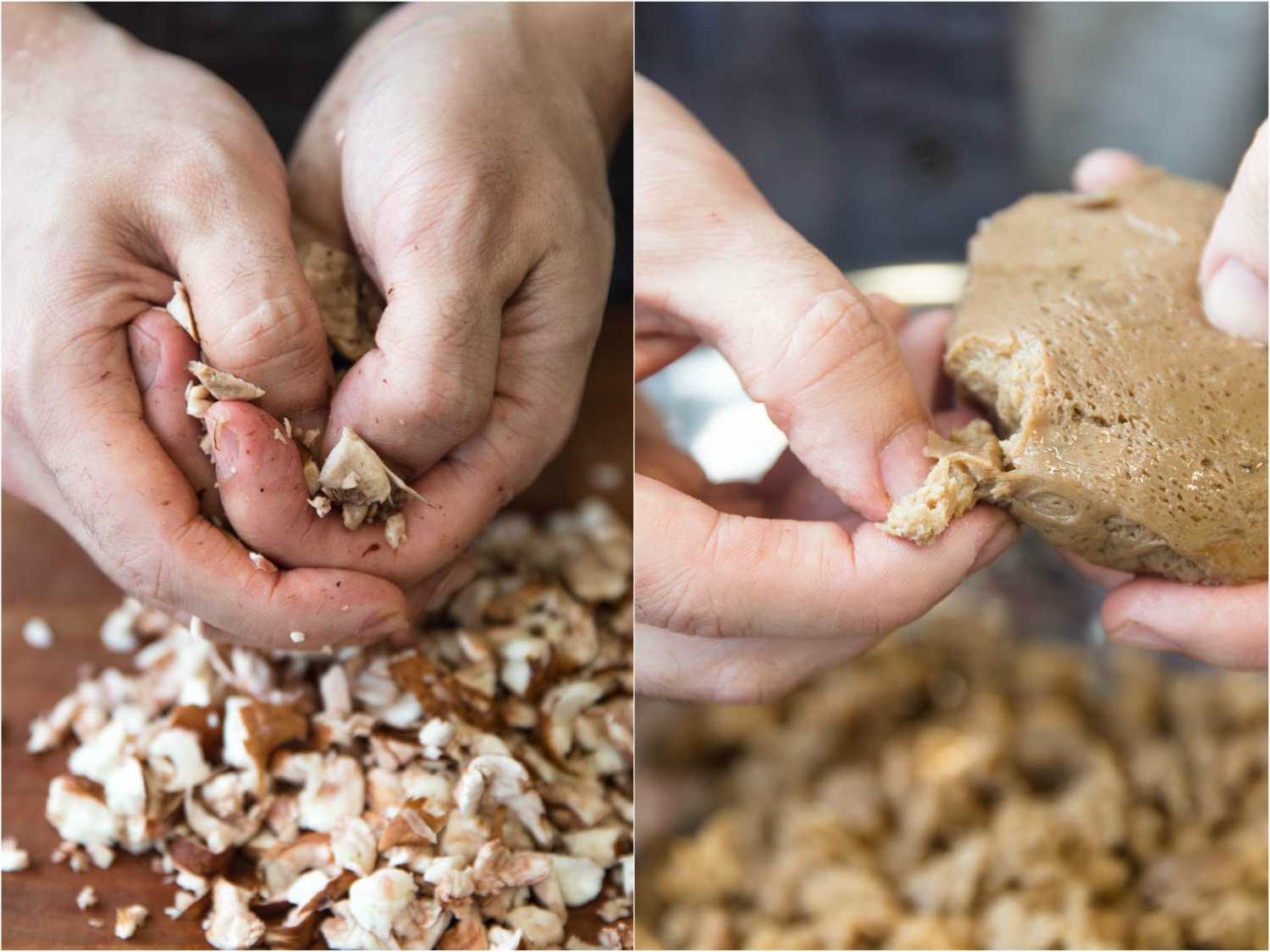
To give both the mushrooms and the seitan an appropriately ground-meaty texture, I crush and tear them by hand into little pieces. You could save time by chopping them, but those clean cuts won’t deliver an important textural cue that tricks your mouth into thinking it’s eating ground beef.
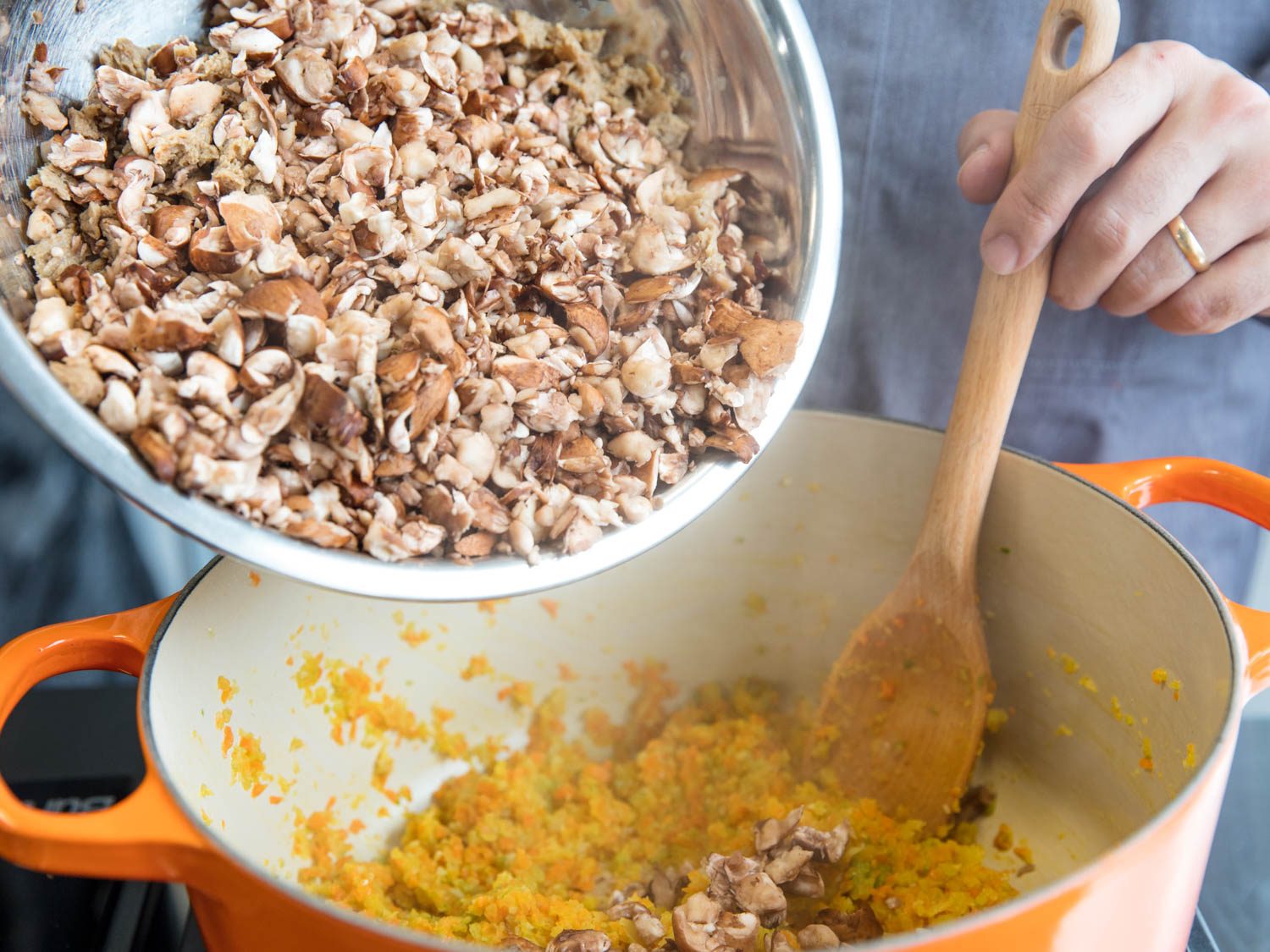
In the pot, I cook the mushrooms and seitan until the mushrooms have dumped all their liquid and have started to brown. This can take a while because seitan is quite wet as well, which slows down the browning process. Once the browning does start, I stir in a large spoonful of tomato paste, then follow it with a generous dose of wine.
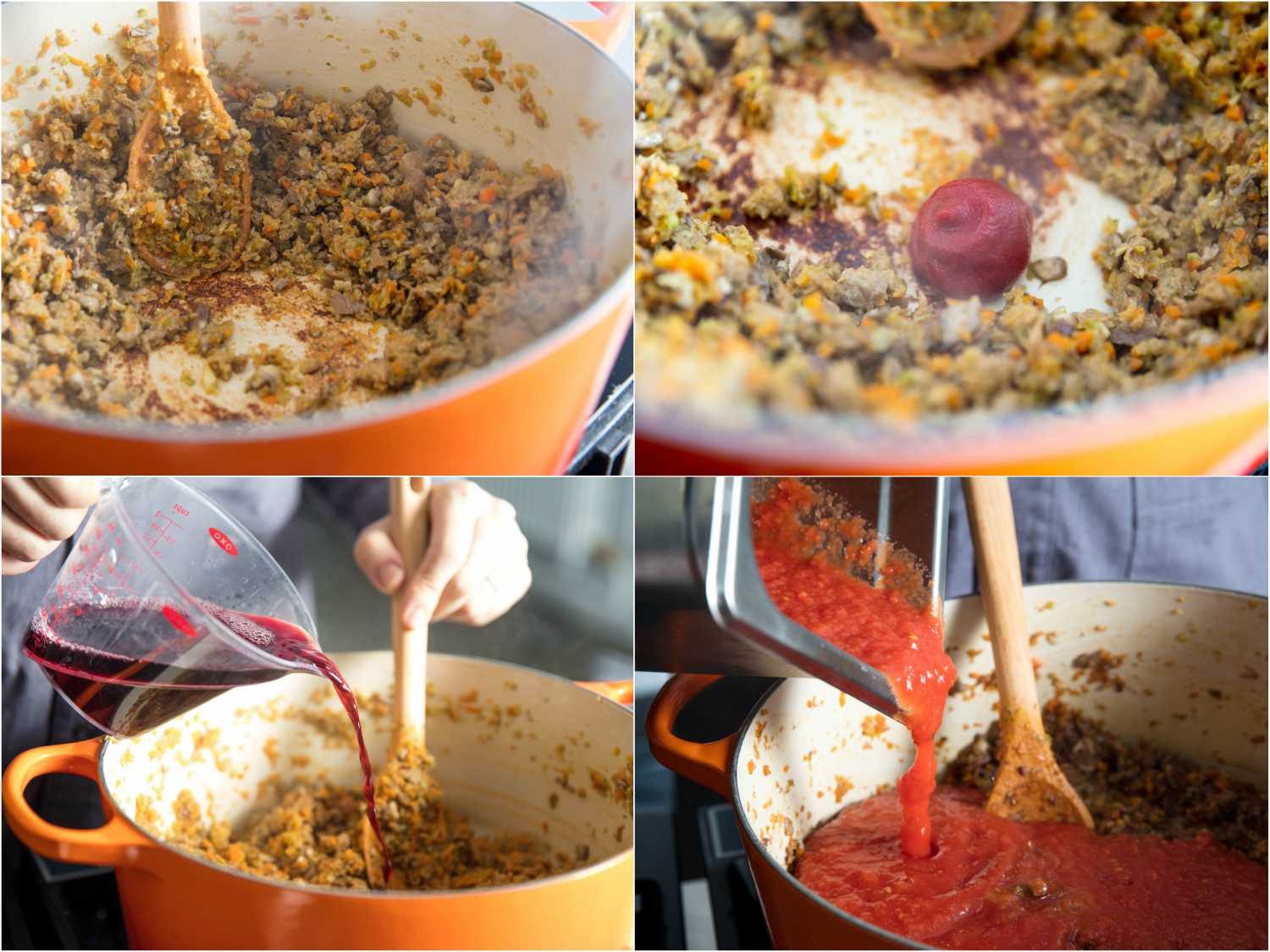
I prefer white wine in a classic Bolognese, but in this vegan sauce, I need my smokescreens, and red wine has a more robust flavor that flirts with your taste buds more—and the more flirting your taste buds get from the red wine, the less they’ll notice that you’re not eating meat.
Once the raw alcohol smell of the wine has cooked off, I add a can of puréed tomatoes—I prefer to start with canned whole tomatoes and purée them myself—followed by even more flavor smokescreens: rosemary and sage sprigs, soy sauce, and red miso.
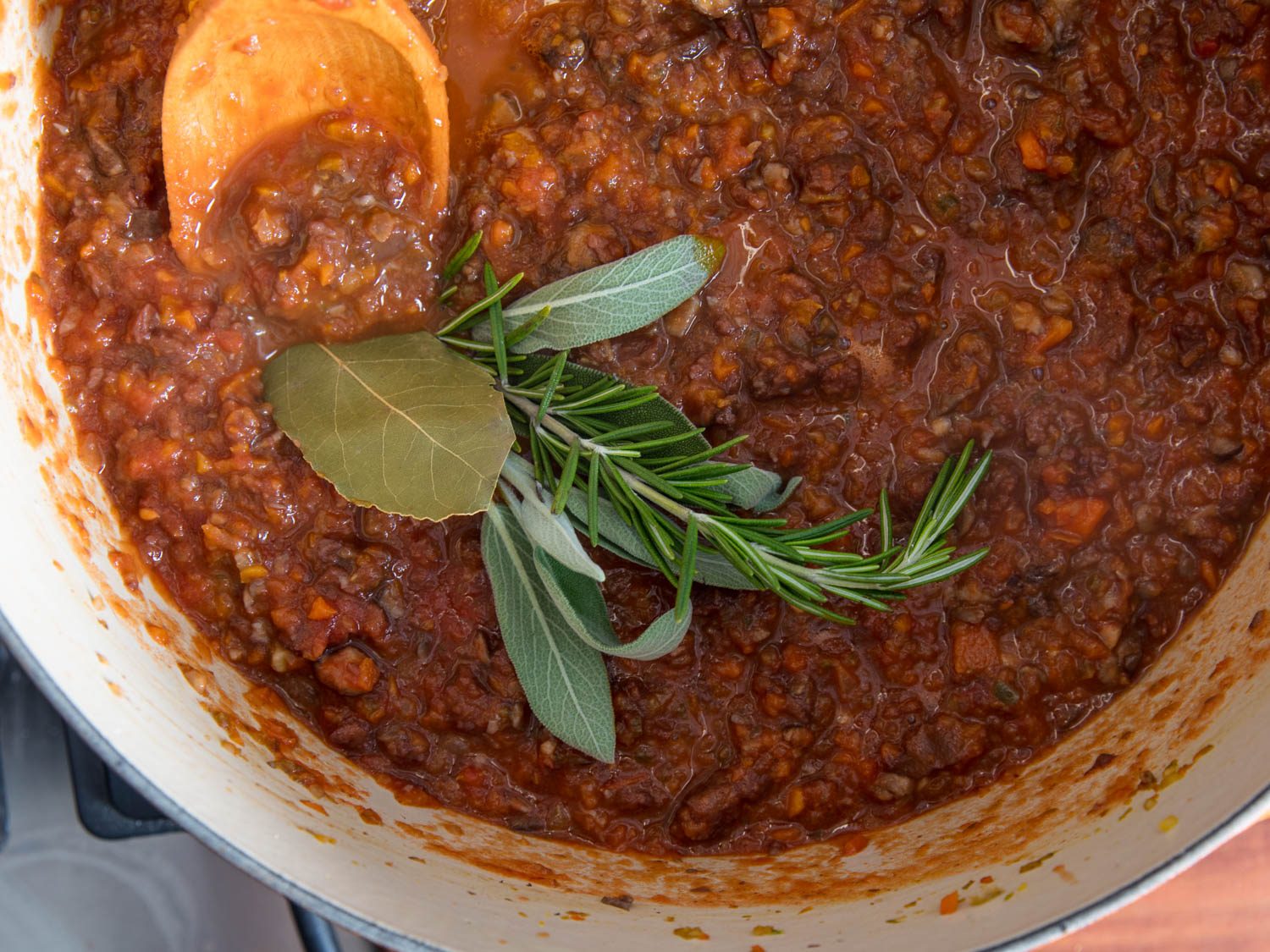
Those woodsy herbs are a classic pairing with Italian braised and grilled meats, so they’re perfect for suggesting meat even when it isn’t there. The soy sauce and miso, meanwhile, while clearly not traditional, add complexity and deep savoriness that normally come from the meat itself.
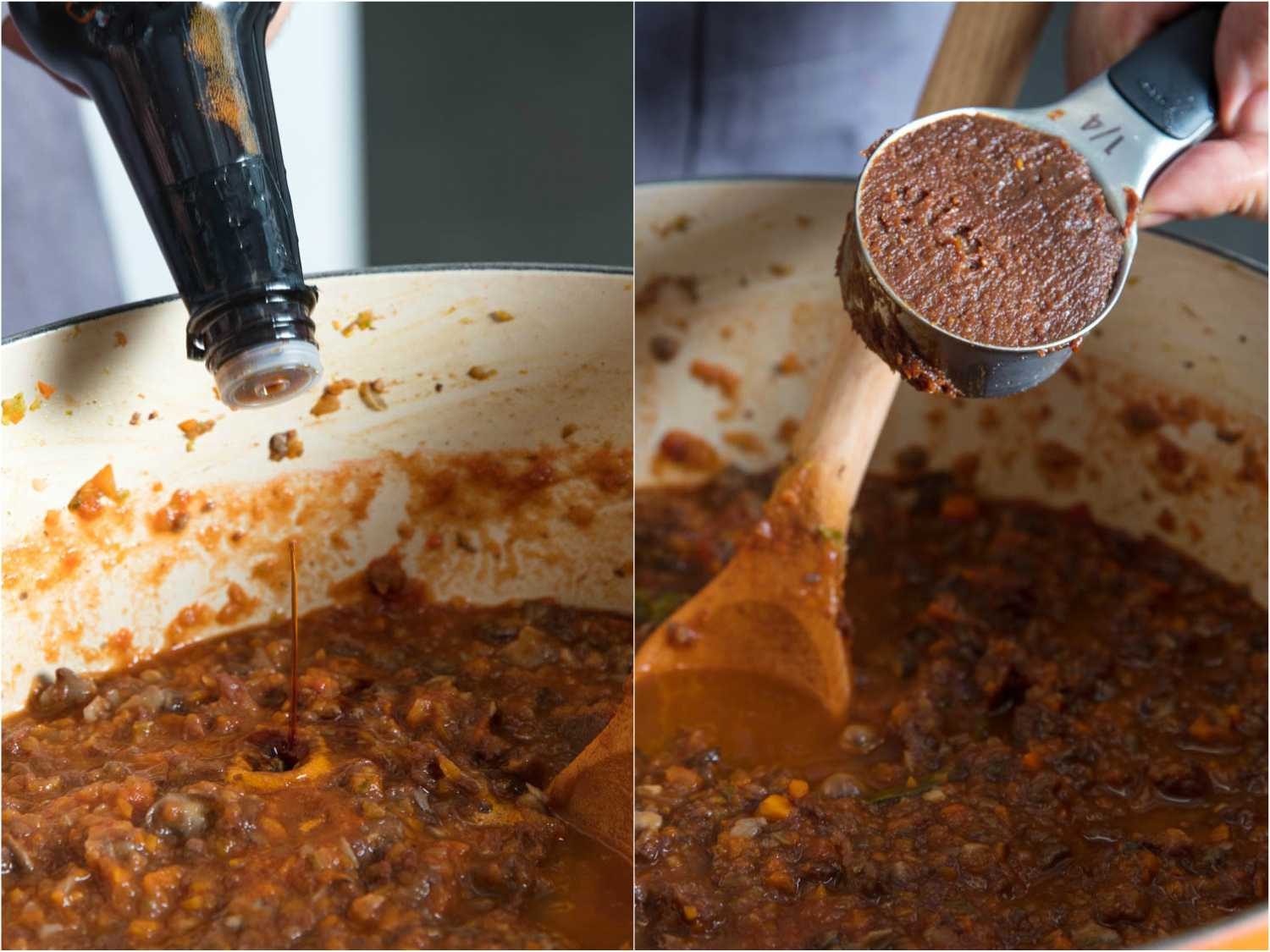
My final touch for the sauce is a scoop of flavorless refined coconut oil. Its role is to add the silkiness and richness of emulsified beef fat in a classic Bolognese sauce. Without it, the sauce is too lean, a dead giveaway that it’s a vegan impostor.
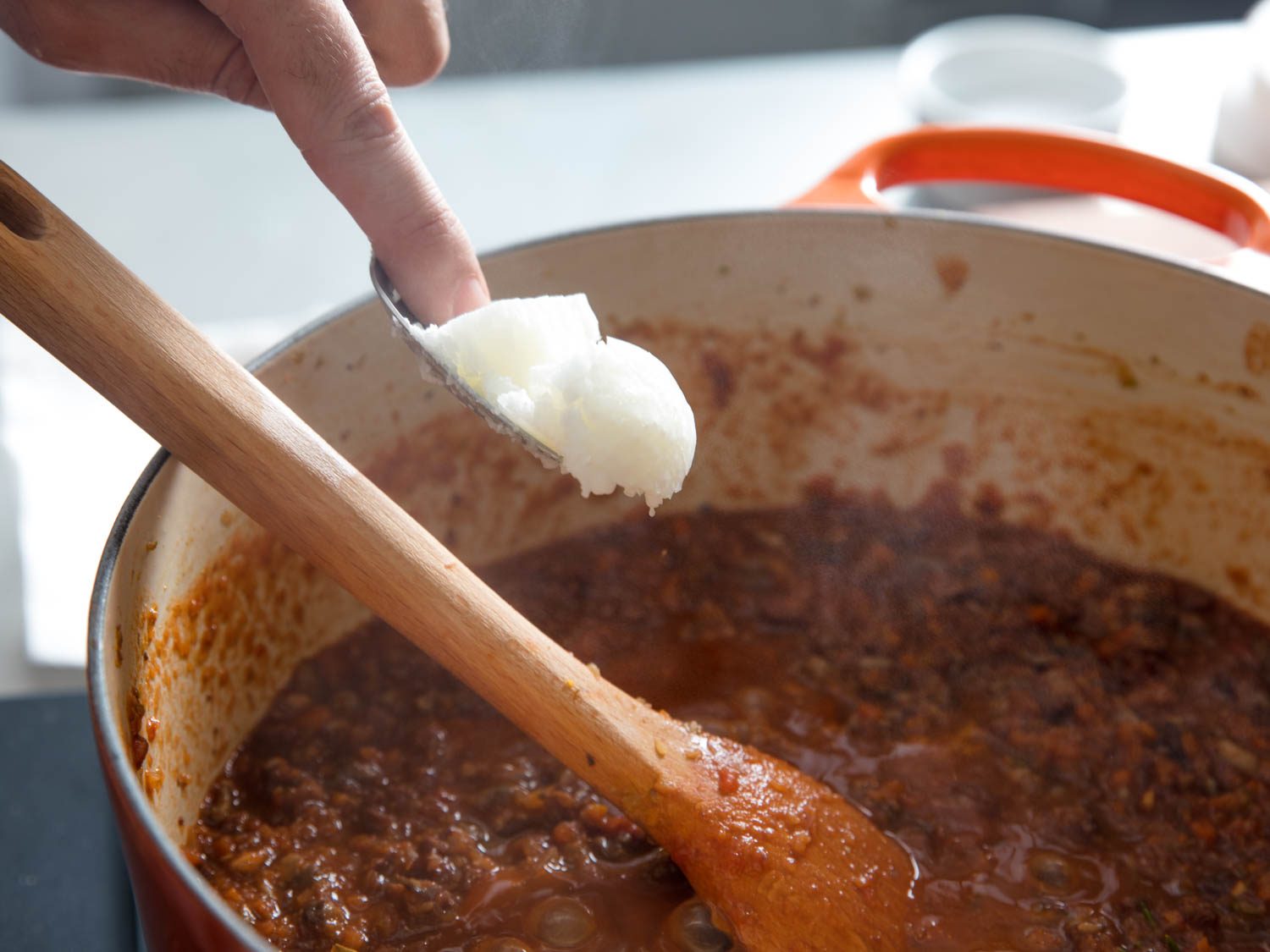
After the sauce has stewed for a while and grown thick, I stir in a little bit of my vegan béchamel to make the ragù lightly creamy.
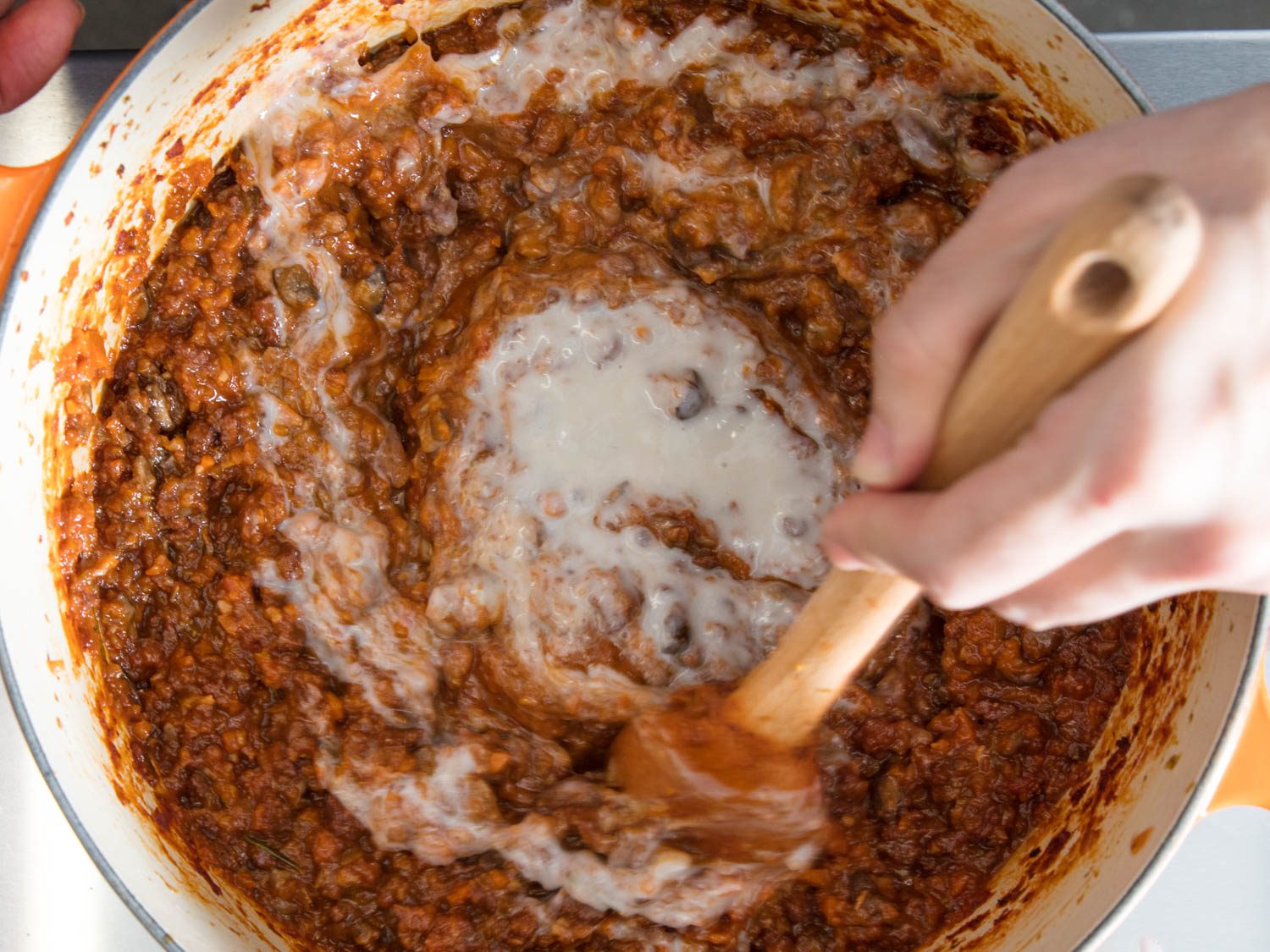
Then it’s time to assemble the lasagna, in alternating layers of pasta, ragù, and drizzles of béchamel.
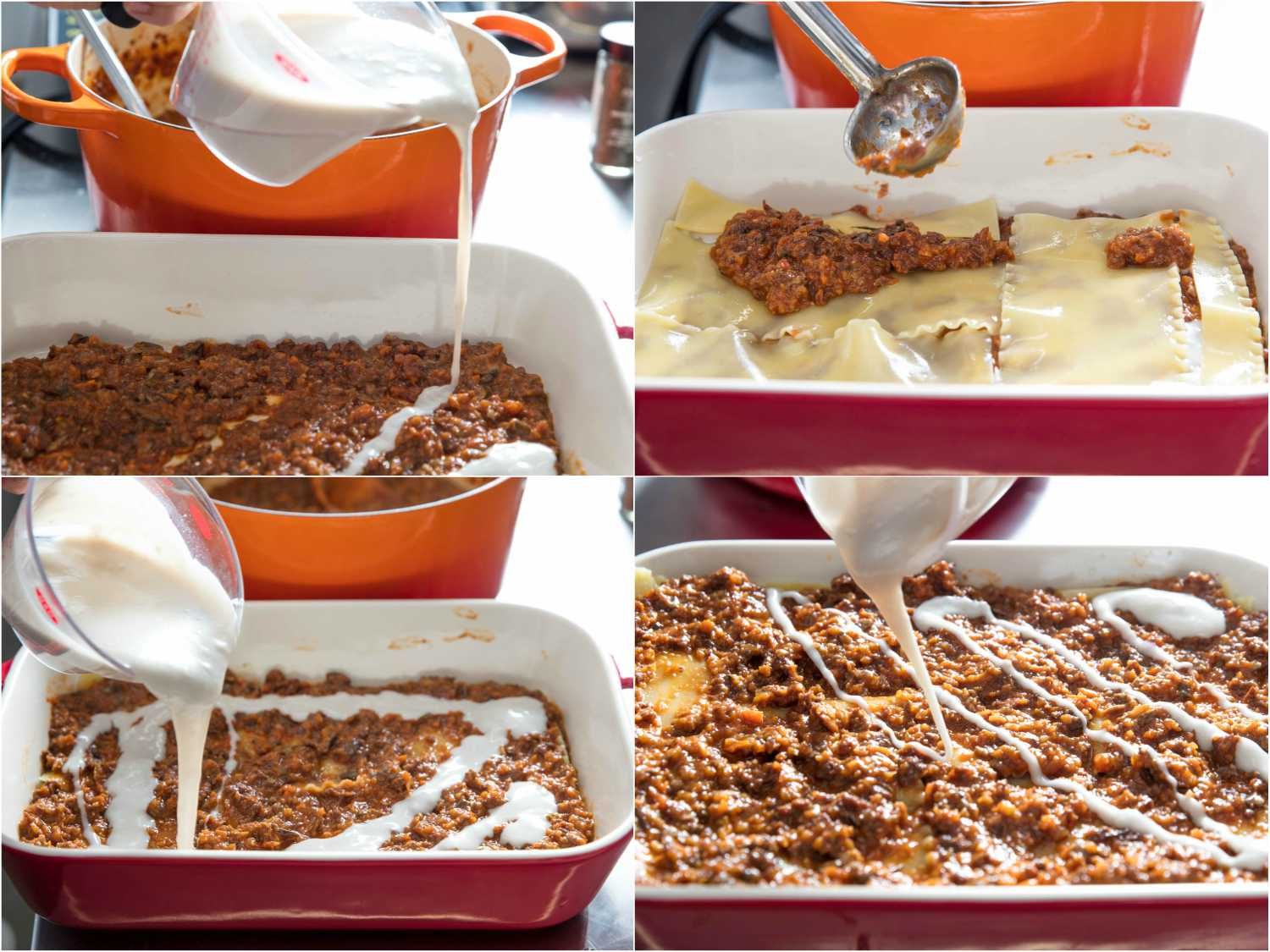
Once it’s baked until browned and bubbling, you can hardly tell by looking that it’s not a beefy lasagna. As for the taste, I’d wager it could fool more than a few people. And even the ones who aren’t fooled? They’ll still enjoy it.
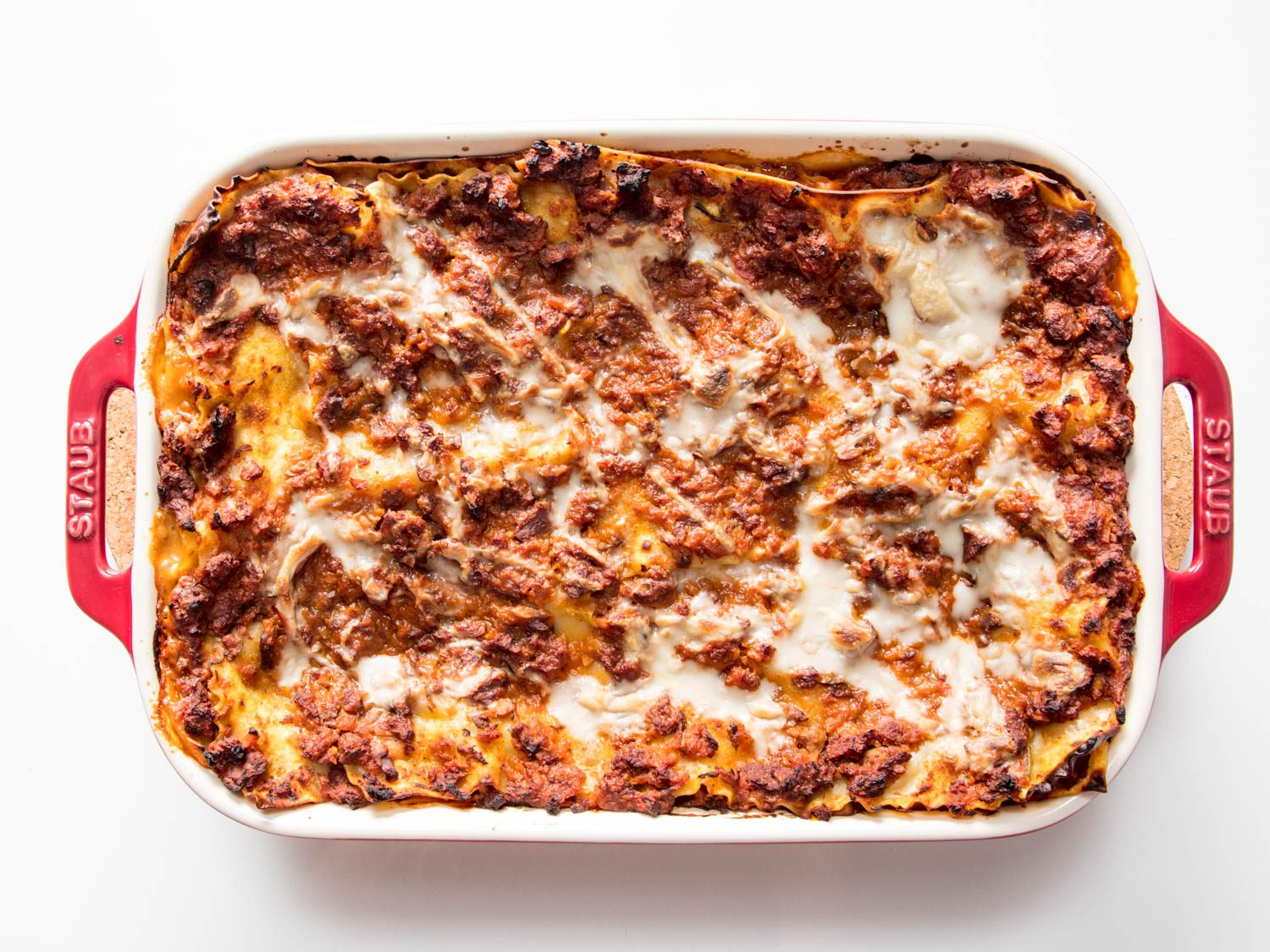
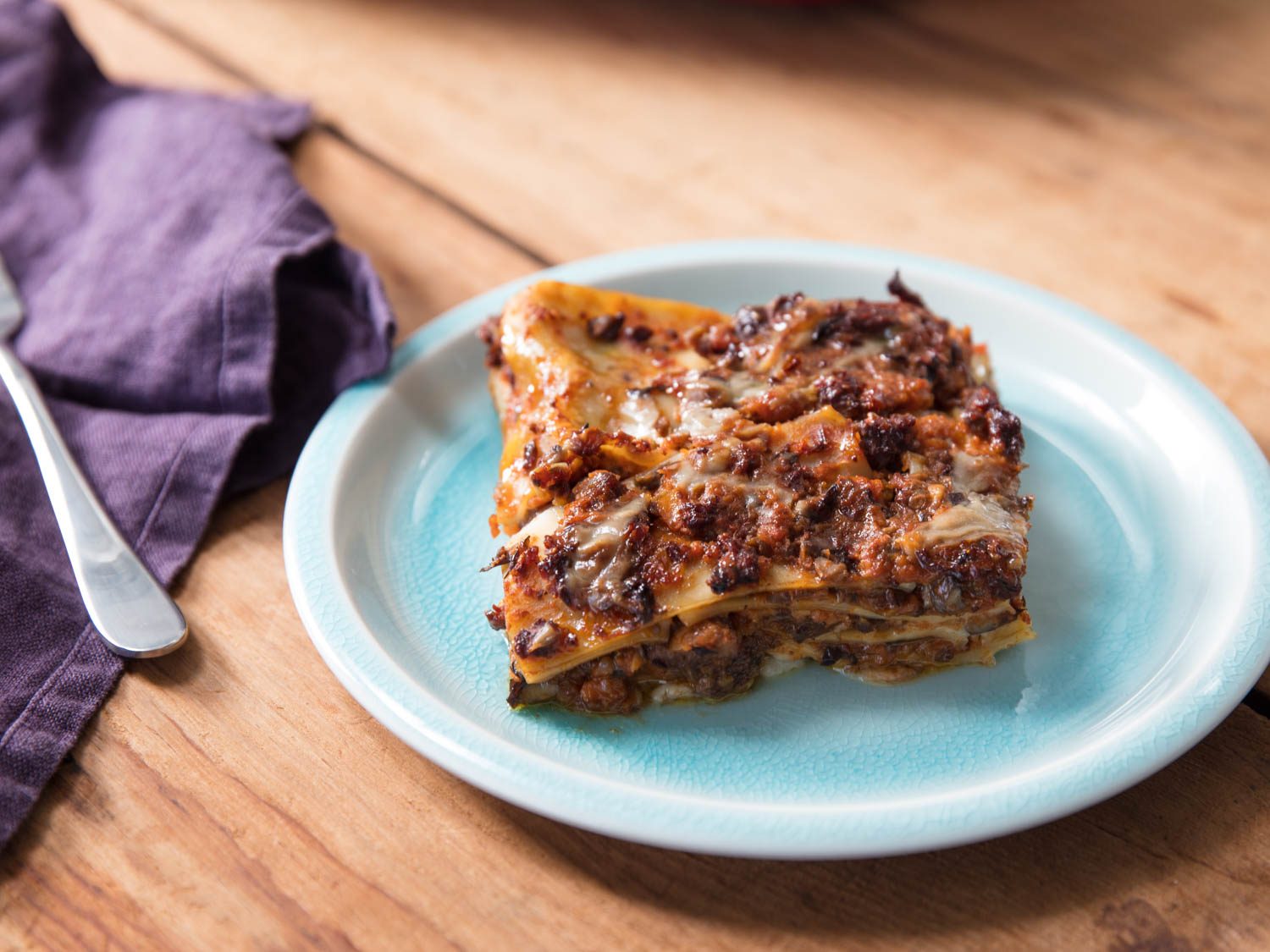
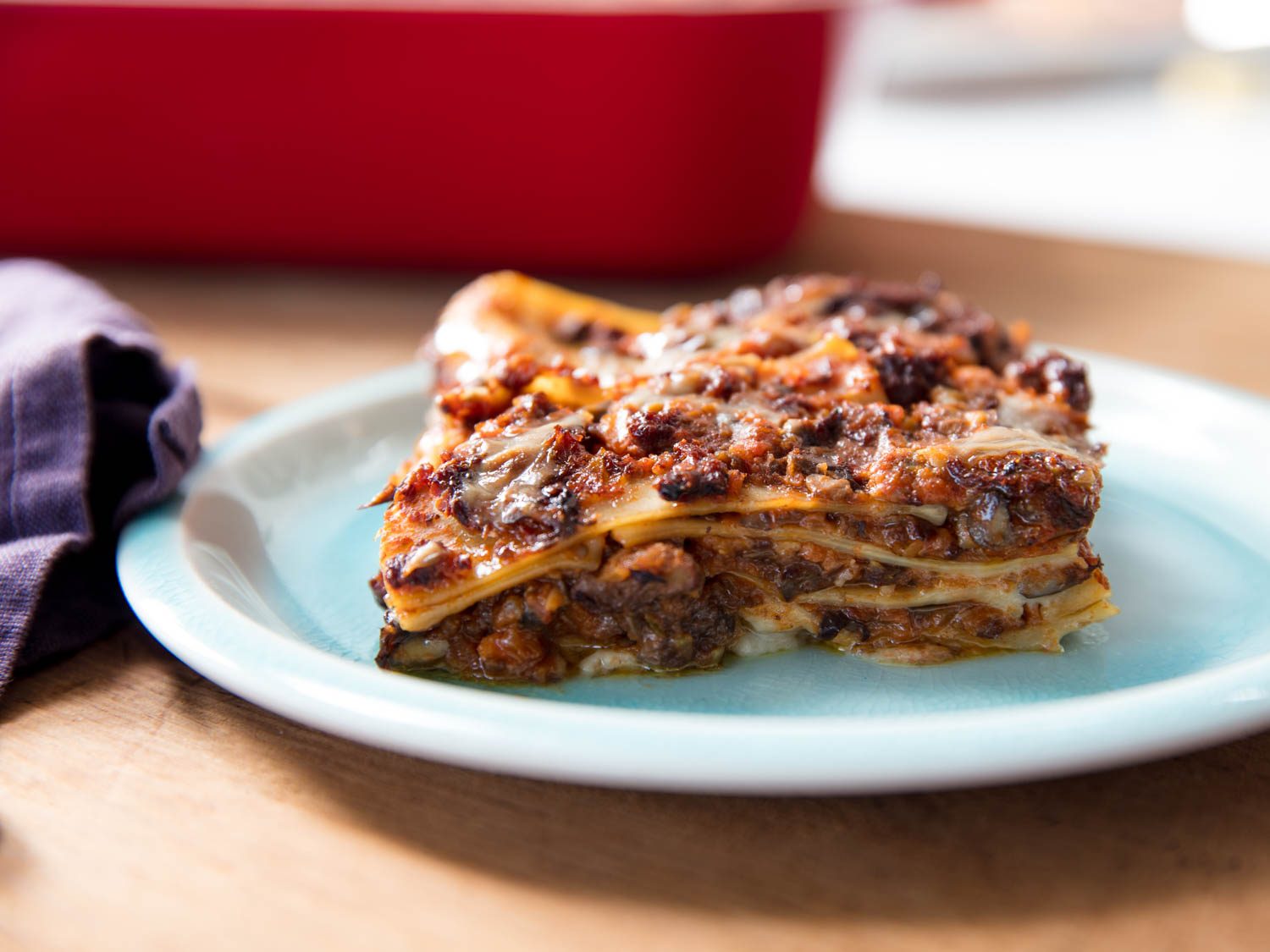
Source link